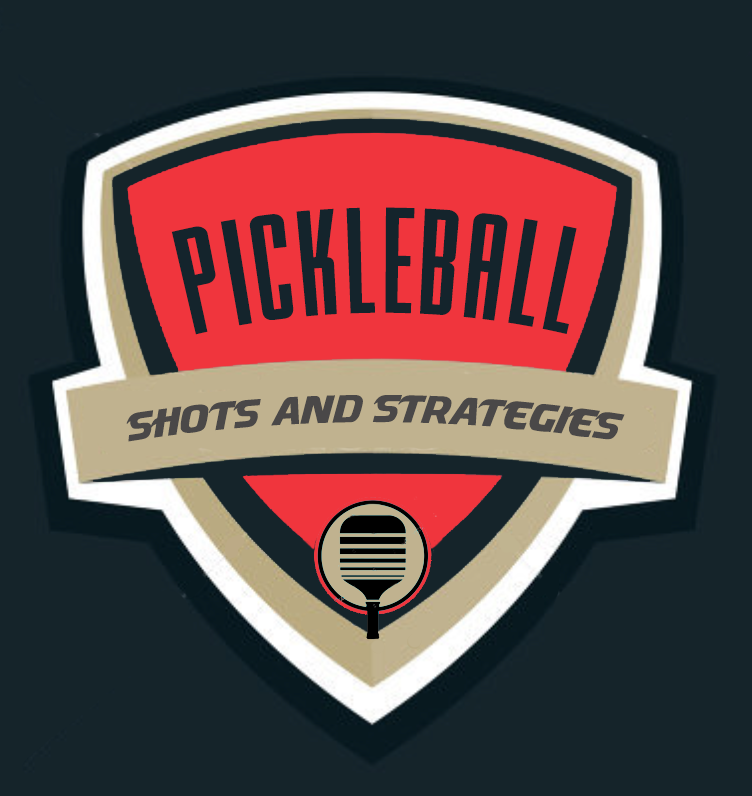POACHING
Poaching is when you anticipate that the ball will be hit to your partner and you move to intercept it. Intercepting would be the concept of poaching. A common example is when you are up at your NVZ line when your partner is hitting the return of serve. Your partner hits the return and starts to move in. Your opponents have been hitting most balls back to your partner’s side and you move across the court to poach the returning shot.
The timing of a poach is critical. You want to first cover your side of the court. That makes your opponent want to hit the ball to the other side of the court. At the time that your opponent is making contact with the ball, you move to the center of the court to play a percentage of your opponent’s shots that would have landed on your partner’s side, but more in the middle of the court. You are not trying to play every ball. If you move too early, your opponent may hit the ball behind you. That is a shot that neither you or your partner can get. This can cause contention between you and your partner as your partner is thinking that they can cover their side of the court and you need to cover your side.
A big part of poaching is to simply pressure your opponents into hitting the ball into a smaller area of your partner’s court. This pressure is an important aspect because it narrows the target area of your opponent’s shots and can force them into unforced errors. The term, “pinching the middle”, means to stand closer to the middle of the court to force your opponent’s shots wider into your partner’s court.
Faking a poach is another effective tactic. You move early as if you are going to poach. But as your opponent is hitting the ball, you move back to cover your side of the court. Your fake is designed to get your opponent to hit the ball to your side of the court.
Poaching should have a limit as to how far you cross over to play a ball that would have landed on your partner’s side of the court. A general rule would be for you to cover your side of the court plus 2 to 3 feet of your opponent’s court which are balls hit down the middle of the court. More aggressive players might try to cover most balls being hit to their partner’s side. Getting too aggressive and playing too much of your partner’s court crosses over from “poaching” to “trespassing”. Your partner is on the court to play, so keep that in mind.
Poaching can be more of a strategy when your opponents are hitting every ball to your partner and only serving to you. In recreational play, first say to your opponents that you came to play as well. Hopefully that works so your opponents start to hit some balls to your side of the court.
Poaching on balls too far to your opponent’s side of the court when your partner is up can be dangerous. The last thing that your partner wants is to have you run into them and knock them down. Safety is an issue, so when you poach, do it under control. Remember, it is just one point in a pickleball game.
When to poach:
If you are playing friendly recreational games with no emphasis on winning, poaching should not be done. Let your partner play balls hit to their side and you play balls that are hit to your side.
If the games become more competitive, then you can poach balls that would have landed on your partner’s side, but you should always be under control. It is dangerous at some levels where a player crosses and is out of control and just might run into their partner.
Your partner is moving forward after they hit the return of serve. Generally, players hit the third shot drive to that side of the court because they know that the returner, your partner, will most likely be farther away from the NVZ line and moving. Your poaching covers drives through the middle of the court.
When your partner hits a good third shot drop that forces your opponent to hit up on the ball and you anticipate their shot being hit back to your partner.
A lob is hit to your partner’s side of the court and you have a stronger overhead.
Poaching from a stacking formation can be effective as long as your timing of when to move is very good. You line up on one side of the court at your NVZ line and give a signal to your partner on whether you are going to stay or cross. When you decide to cross, generally you move before your opponent hits the ball. Delaying your switch is a tactic in which you want your opponent to hit the ball to the side of the court that you are going to cover. This can be risky on a well hit ball to pass you if you don’t get all the way over to the side of the court that is your responsibility.
To play effectively against poachers, you want to focus on hitting the ball so it lands inside the NVZ line and away from the poacher. For example, shots that land crosscourt near the sideline and in front of the NVZ line make it next to impossible to poach. The poacher needs a high ball in order to hit a forceful shot.
Do not poach in friendly recreational play.
Anticipate your opponent’s shot to poach.
Applying pressure by pinching the middle is effective.
Poach under control.
Hit shots near the NVZ line to stop poachers.
